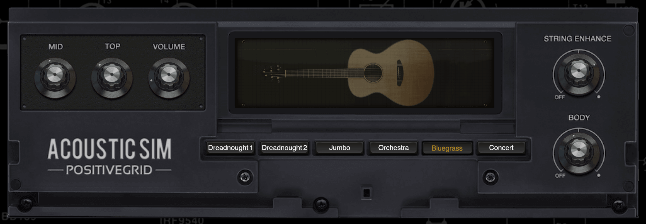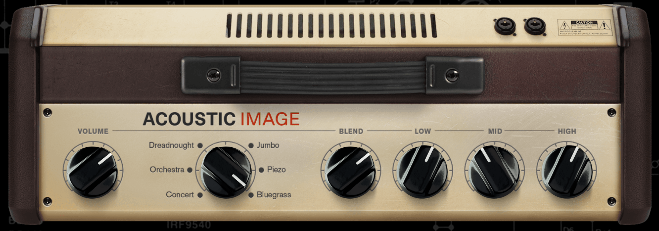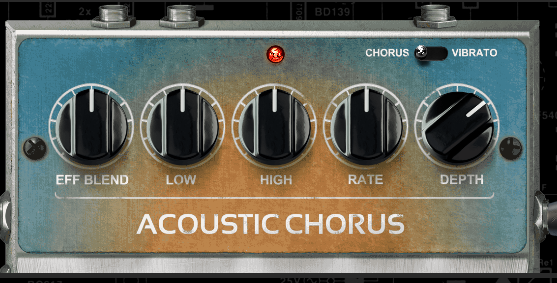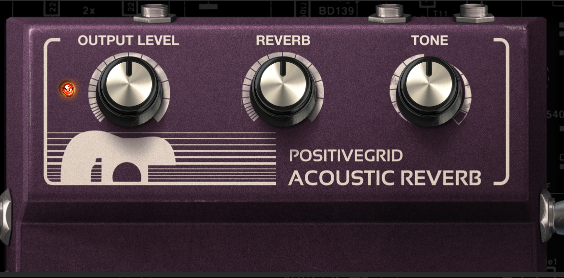
People often mean quite different things when they use the word “clean”. Sometimes its crystal clean like an acoustic, sometimes its warmish and dull with a bit of breakup, sometimes its spanky like a surf guitar that has some breakup when you really hit it. Many times it the sound of some serious high gain tones, but with the guitar’s onboard volume turned down.
When it comes time to get a totally, not distorted, bright, clean tone, no matter how hard you hit the guitar, things can get tricky. Way back in the day, the Marshall JMP-1 seemed magically capable of it, and so it came as no surprise that S_Gear, in VST was also capable of pulling it off.
In a somewhat excited internet rountable discussion about cleans some years ago, Ken McLaren of AcmeBarGig said to try his Redshift pickup replacer or even an impulse to accomplish this. Of course, I had to ask what he was smoking, as obviously this is a dynamic thing, not a tone thing, and impulses were not going to be handling dynamics at all.
But he insisted, and I tried it, and sure enough, for that crystal clean, I have been using impulses ever since!
Over the past year, I had been loading a custom acoustic guitar response in NADIR in front of BiasFX when using it in VST mode, but always bummed that I couldn’t get anywhere near there in Bias FX standalone
Enter Bias FX Acoustic Expansion Pack!
The Acoustic Expansion Pack for Bias FX features a few tools get make the most out of an actual acoustic guitar recording or pickup and magically, a few tools to turn your electric guitar into an acoustic! For some reason, very little info about this expansion pack showed up on the net in any search I did, so I could be wrong about a lot of the following:

Acoustic Sim. This FX Block had little trouble taking my EMG 707s or Blackouts, at full volume even, and making them crystal clean!
The Mid and Top controls gave a lot of the characteristics you would expect from an acoustic guitar, and made them stronger or weaker. I tended not to mess with these controls much, keeping them at their minimum volume, when I wanted a strict clean tone, but dialed them up a bit to get an actual acoustic guitar tone.
Volume seemed to be a regular level control, and I’ll leave the debate about nonliniear effects of the various Bias and Bias FX volume knobs for another forum
String Enhance could give you an exciter type of effect, for good or for ill, it was certainly not subtle, you may love it or you may hate it, but its there if you want it.
Now the Body control is where things get really far from the realms of subtlety. This control turns up or down, what I can most easily describe as a mic pointed somewhere along the far edges of the body of an acoustic guitar, but very very close to the body. It was quite realistic. Exceedingly so. However it realistically simulated the sound of a mic in a position I think people mostly wouldn’t like it. Try it for yourself. For me, it was too phasey and “flute-y” sounding and I would just leave it off normally, though strangely, everything I said makes it sound AMAZING on electric bass guitar! I have no idea why, try it. Switching between the body types underneath the picture of the guitar changes the effect that the Body knob controls. If you have the Body knob all the way off, switching these switches seems to do nothing.

Acoustic Image. This FX Block seems very similar to Acoustic Sim, though I just wasn’t able to get as nice a super clean sound, it gave me a few different options of sounding like an acoustic guitar than Acoustic Sim did. I’d really like to see both of these get a bit of work. They are most certainly usable as is, but I think they could be class leaders with a little more tinkering.

Acoustic Preamp – If you are plugging in an actual acoustic guitar, with a pickup, this FX Block will give you the effect you’d expect when plugging into an old Crate Acoustic amp or, paired with the chorus below, something like running a Roland AC60.
Unlike wither of these, the gain control, and to some extent, surprisingly, the Mid control, will give you some unmistakably tube like distortion. This will not at all give you the “hardness” you may expect and possibly even desire, that a transistor acoustic amp will, and the lack of a Magnetic/Piezo selector switch might make that feel like a double insult.
But that’s before you try the treble control! Want the “spank” of a transistor acoustic amp? Turn it up halfway. Want so much exciter that it takes you into Mutt Lange territory? Keep turning it up. And if you think I’m kidding, here it is on a snare!

An EQ, pretty much as you’d expect. It has two sweepable mid bands with a wide enough Q not to get too “flute-y”.
This is a plugin where you really do feel the limitations of the Positive Grid Paradigm of not having the standard plugin control modifiers, like return to unity gain, return to preset default (or presets at all!), fine tune, direct entry, and perhaps the one that makes it most difficult of all, not being able to see the exact parameter values at a glance. These can all make comparing apples to apples, or really dialing in your sound quite a bit harder than it should be, and hopefully will be looked at across the entire Bias line of products.

Unlike most of the Bias FX modulation blocks, this one has a real mix control! This means that you will likely use this as your chorus regardless of what type of sound you are after. If you don’t care about any of the other acoustic features in this pack, you might just want to buy Bias Pedal Modulation instead, which will get you access to that critical wet/dry control (of course, Positive Grid should have a wet/dry control on EVERYTHING, but until that happens…)
As a chorus, this is pretty nice! No Tempo sync options, no delay control, but it will give you the lush, swirly sound that you are probably after in general, without the phasing problems of the stock Bias FX choruses

Reverb is a decent, basic reverb with no real detailed parameters, but will certainly give you the type of reverb sound you would expect from any of the classic (is it ok to call amps from the 1990’s “classic”?) acoustic amps
Here is a video showing turning a dull, regular electric guitar using EMG 707’s thru a DI box, turning into the type of crystal clean sound I will often use in mixes. After that, I show the effect of the Body control on the Acoustic SIM and the different body styles. Note the phase-y flute-y sound once the body control is engaged. You will be surprised how that can turn into a positive come mix time!
In Conclusion
If you are using Bias FX as a standalone, and really need crystal clean tones, this pack is a no brainer, especially if you want to use a chorus effect, ever. In addition to those two major functions, the other included parts open up a pretty decent extra tone palette.
If you are on iOS, it costs almost nothing, definitely pick it up! Desktop users may want to take a harder look, but if you can swing it, its hard not to have it.
As an exciter, this pack is actually cheaper than some of the others out there. Give it a chance vs the usual suspects when doing your drum or vocal mixes and see how you feel about it.
If you are using Bias FX inside a DAW and have access to other VST’s, you can likely get the contents of this plugin from other VST’s, the acoustic sim from an impulse loader of other acoustic sim effect, the EQ, chorus and reverb from other effects, and likely those will have direct entry, fine tuning, double click to unity, presets, and all the basic functions missing in the Bias world. Even in this case though, give it a try and see if its worth it for you for the all in one convenience of storing an entire chain in one plugin for your templates!
Thanks for your no nonsense review much appreciated.